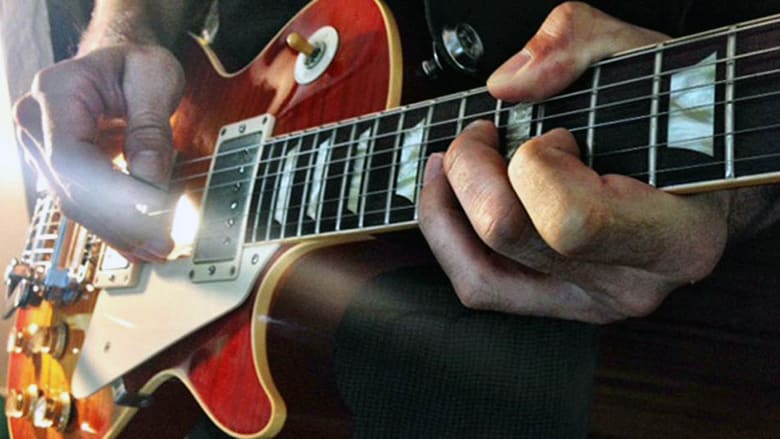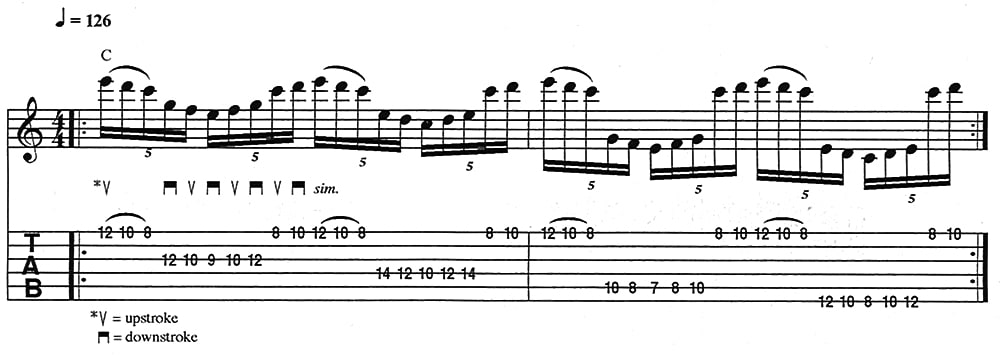String-Skipping Licks: Four Phrases to Get Your Fingers Flying
Add an element of the unpredictable to your playing

Any fretboard pattern that involves playing notes that shift between nonadjacent strings qualifies as a string-skipping lick.
Gifted players ranging from Paul Gilbert to Pat Metheny to John Scofield frequently use string-skipping approaches to interject unpredictable intervallic content into their lines. Strategies may range from simply rearranging the order of strings played in an ascending/descending three-note-per-string scale shape to inventing more unorthodox shapes to complement the style.
Let’s have a look at some.
Lick 1

This first string-skipping lick, rooted roughly in 8th position, demonstrates the dramatic effect that can be achieved by shifting the same digital pattern—a “1–2–4” fingering sequence—over a series of nonadjacent strings. In this example, the opening 10-note motif shared between the 1st and 3rd strings is developed over time by increasing the distance of each string skip—culminating with a skip between the 1st and 6th strings!
Lick 2

Basic pentatonic shapes can also be approached in “string-skipping” fashion. In this next example, a four-note A minor pentatonic (A C D E G) string-skipping motif performed in 5th position is moved diatonically to 7th position, maintaining skips between the 4th and 6th strings. This same approach is then used to access notes on successive string sets—between the 3rd and 5th strings, 2nd and 4th strings, etc.
Lick 3

This next lick depicts a familiar six-note pattern, which is typically played in a three-note-per-string manner between adjacent strings, with a string skip inserted between. The string skips makes it possible to restate the same arrangement of pitches in the next higher octave, for a blistering sextuplet burst within the E Phrygian dominant scale (E F G# A B C D).
Lick 4

Designed to draw attention to the colorful extensions that can be applied to a G7 chord, the following spider-like arpeggio passage combines string skipping with fret-hand stretches to frightening effect. The better you’re able to visualize the notes of a basic G7 arpeggio (G B D F), the easier it will be for you to graft this seemingly haphazard note sequence onto the fretboard.
Get The Pick Newsletter
All the latest guitar news, interviews, lessons, reviews, deals and more, direct to your inbox!
“Write for five minutes a day. I mean, who can’t manage that?” Mike Stern's top five guitar tips include one simple fix to help you develop your personal guitar style
"It’s like you’re making a statement. And you never know where it’ll lead." Pete Thorn shares the tip that convinced Joe Satriani he was the right guitarist for the SatchVai Band










